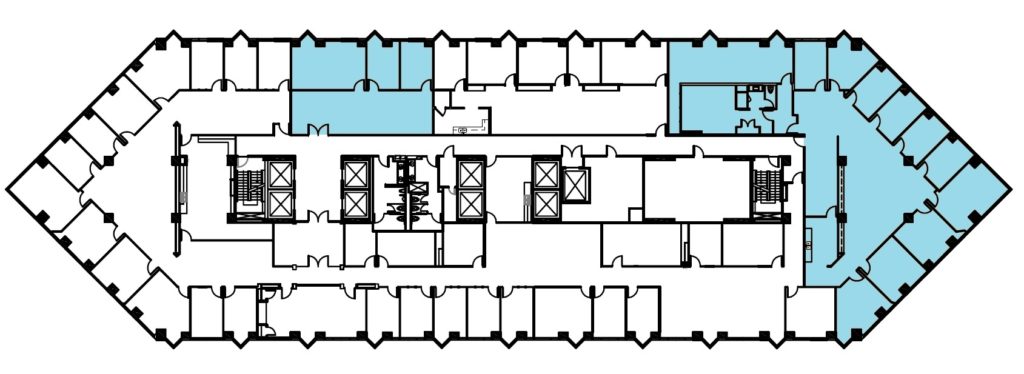
BOMA standards, or the Building Owners and Managers Association standards are a set of measurement guidelines that help provide clear communication among all the participants in a commercial real estate transaction. Having this universal set of office space measurement standards allows for more accurate comparisons. Starting in 2017, the BOMA Office Standards also started to align with the International Property Measurement Standards.
There are many different ways to measure an office space, but BOMA has become one of the most popular standards that architects and space planners abide by. BOMA is an automated process, and calculations by different parties will not be exactly the same. Therefore, calculations are deemed accurate if re-measurements result in a variance of under 2%. If the measurements vary by more than 2%, a re-measurement by an unbiased third party is recommended.
Key Concepts of BOMA Measurements
A few key concepts to know regarding BOMA standards are major vertical penetrations (MVP), floor common area (FCA), building common area (BCA), usable area, and exterior spaces. MVPs include things like stairs, elevator shafts, flues, pipe shafts, light wells, atrium spaces above the furnished floor, etc. These things are not included in the rentable space of an office (except on the lowest floor). The FCA includes things like bathrooms, janitorial closets, utility rooms, public corridors, elevator lobbies, etc. These are things used by the entire floor. The BCA includes lobbies, concierge/security desks, conference rooms, lounges, health and fitness centers, daycare facilities, mail rooms, fully enclosed courtyards outside the exterior walls, food service facilities, etc. These are areas used by the entire building.
In 2017, BOMA standards were updated to now include exterior amenities for consideration when calculating rentable space. Things like balconies, covered galleries, finished rooftop terraces and more have increased in demand. If these spaces are for exclusive use by a tenant, they can be included in the rentable square footage calculation.
BOMA 2017 introduced a methodology to calculate amenities or service areas that were being used by some occupants but not by the whole floor or building. It is called Inter-Building Area. This is to make sure that tenants are not paying for space they do not use.
Calculating Load Factor with BOMA
There are two different ways to calculate the load factor (gross-up) in an office building. In Method A, the floor rentable/usable ratio would vary between floors depending on the layout.
For Method B, the same load factor (gross-up) can be applied to all floors of the building. This situation results in a new class of space is introduced called Base Building Circulation. This is the minimum path on a multi-tenant floor for access and egress. It is applied to all floors regardless of the layout. BOMA 2017 also introduced the ability to allow capped load factors on an occupant by occupant basis. This helps landlords and tenants negotiate more personalized leases.
While the ever-changing BOMA standards can be very confusing to those that aren’t measuring office space everyday, they have become a very help guideline to create a “market standard” for measuring the square footage of commercial office space.